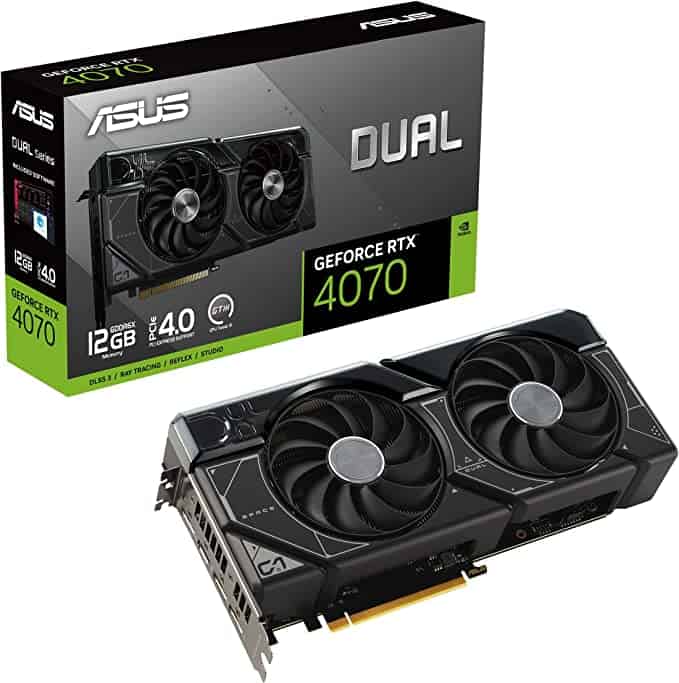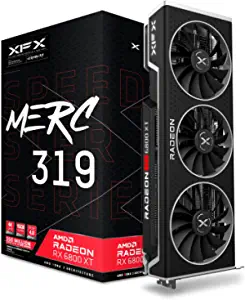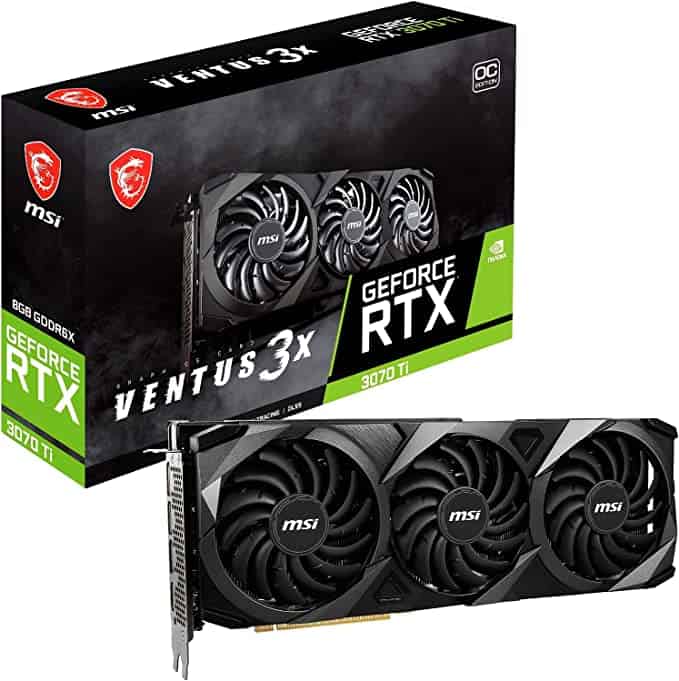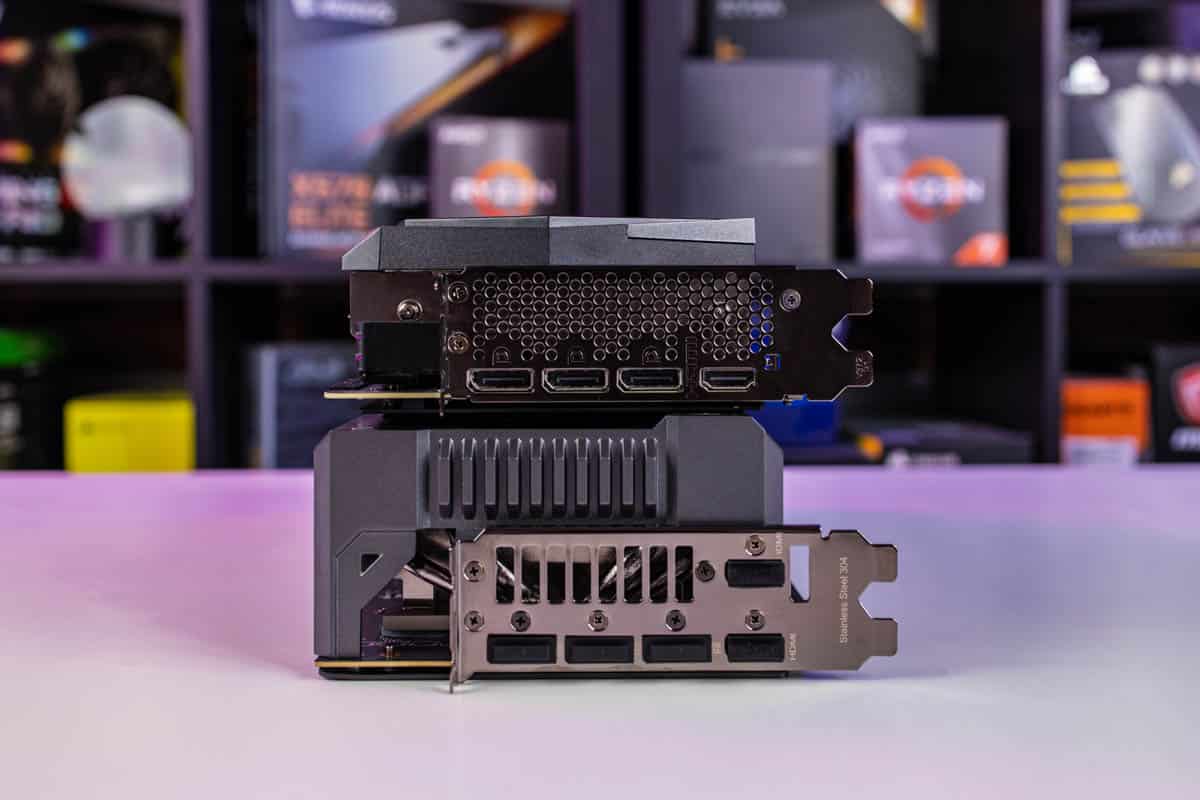You can trust VideoGamer. Our team of gaming experts spend hours testing and reviewing the latest games, to ensure you're reading the most comprehensive guide possible. Rest assured, all imagery and advice is unique and original. Check out how we test and review games here
Trying to match up your CPU and GPU can be a bit daunting, so here we look for the best GPU for i5-12600K. There are plenty of varieties to pick from when it comes to it, with a couple of generations and different manufacturers to go after, we try to make it a bit easier to decide which to go for.
The i5-12600K is a middling option for the CPU, so you want to make sure you match that power level so as not to cause any bottlenecks for either component. At this level, you can expect great 1440p gameplay, with potentially pushing 4K capabilities as well. Although there are also best budget options to pick from when it comes to choosing your options.
Best GPU for i5-12600K
- ASUS Dual GeForce RTX 4070
- XFX Speedster Merc319 RX 6800 XT
- MSI Gaming GeForce RTX 3070 Ti Ventus 3X
Best overall GPU for an i5-12600K – ASUS Dual GeForce RTX 4070
ASUS Dual GeForce RTX 4070

Base Clock
1,920MHz
Boost Clock
2,475MHz
VRAM
12GB GDDR6X
Dimensions
267 x 134 x 51mm
Recommended PSU
550W
- DLSS 3 and frame generation access
- Great perfromance level for a 70 model
- Still suffers from a price hike over its predecessor
The Nvidia GeForce RTX 4070 is a formidable graphics card to match the performance of the i5-12600K. It offers exceptional value compared to its Ti variant and other options in the Ada range. As a standout choice within its lineup, it maintains its position as one of the most powerful GPUs in its price range. With consistently robust performance across different resolutions and tasks, it surpasses its predecessor’s capabilities.
Featuring the AD104-250 GPU processor manufactured using TSMC’s advanced 5nm process, this card boasts a remarkable 295mm² die housing 35.8 billion transistors. Its impressive specifications include 5,888 CUDA cores, 184 Texture Mapping Units (TMUs), 64 Render Output Units (ROPs), 46 Streaming Multiprocessors (SMs), 46 Ray-Tracing (RT) cores, and 184 Tensor cores. Additionally, it is equipped with 12GB of GDDR6X memory, featuring a 192-bit bus clocked at 21Gbps, delivering a bandwidth of 504.2GB/s. Operating at a base clock speed of 1,920MHz with a boost clock reaching up to 2,475MHz, it has a Total Graphics Power (TGP) of 200W. This allows for high frame rates without excessively heating your PC.
It offers solid performance at a much more attractive price point. Whether you’re a budget-conscious gamer or seeking the best bang for your buck, this card is a great fit. Expect approximately 70 FPS at 4K, 126 FPS at 1440p, and 175 FPS at 1080p, making it a respectable performer across different resolutions. And this is to match what the CPU can achieve as well.
Best AMD GPU for i5-12600K – XFX Speedster Merc319 RX 6800 XT
XFX Speedster Merc319 RX 6800 XT

Base Clock
1,900MHz
Boost Clock
2,340MHz
VRAM
16GB
Dimensions
340 x 137 x 54mm
Recommended PSU
750W
- One of the best performers in the RDNA 2 range
- Good driver support
- A slim option fo model
- Older gen hardware will be surpassed soon
Nothing of the new RDNA 3 lineup matches the performance level required for the 12600K and not becoming too much for it as a result, the AMD Radeon RX 6800 XT continues to shine as the standout choice from its generation.
The AMD RX 6800 XT is equipped with the Navi 21 XT GPU, built on the RDNA 2 architecture using TSMC’s 7nm process. It features a die size of 520mm² and houses 26.8 billion transistors. With 16GB of GDDR6 memory operating on a 256-bit bus at 16Gbps, it delivers a bandwidth of 512GB/s. The GPU operates at a base clock speed of 1,825MHz, capable of boosting up to 2,250MHz, and has a game clock of 2,105MHz. Boasting 4,608 Shading Units, 288 TMUs, 128 ROPs, 72 CUs, and 72 RT cores, it offers impressive specifications. While its TDP is 300W, indicating relatively higher power consumption compared to some alternatives, it remains a competitive option.
In terms of gaming and FPS performance, AMD holds a strong position. Its ongoing robust software support and unique advantages make it an appealing choice. Furthermore, since the card has been on the market for a while, it is likely that you can find it at a more attractive price point. Although without the same brand connection, you might not get as seamless of an experience.
Best Nvidia GPU for i5-12600K – MSI Gaming GeForce RTX 3070 Ti Ventus 3X
MSI Gaming GeForce RTX 3070 Ti Ventus 3X

Base Clock
1575 MHz
Boost Clock
1800 MHz
VRAM
8GB
Dimensions
316 x 121 x 56 mm
Recommended PSU
600W
- Strong performance pushing it to 4k
- Only 8GB of VRAM limits its perfromance at higher resolutions
For a good performance across the board, the RTX 4070 Ti is another good match for the i5-12600K. This improved option over its predecessor does give it a small boost in what it can achieve. And with it, you get a good choice of GPU.
As part of the GPU, you can find the AD104-400 variant, as part of the Ada architecture it is made up of TSMC’s 5nm process. With a die size of 295mm², it features 35.8 billion transistors. Along with 7,680 CUDA cores, 240 TMUs, 80 ROPs, 60 SMs, 240 Tensors, and 60 RT cores. These are clocked at 2,310MHz, with a boost up to 2,610MHz. Along with 12GB of GDDR6X memory, with a 192-bit bus clocked at 21Gbps, it has a bandwidth of 504.2GB/s. It does have a TDP of 285W.
This does offer good performance in general. And will match the capabilities of what the 12600K can achieve.
Best GPU for i5-12600K – things to consider
When looking for a GPU to match your i5-12600K, there’s a wealth of options to sift through. Both AMD Radeon and Nvidia GeForce have a variety of unique offerings across different generations. Let’s delve into the factors that could potentially influence your decision.
Resolution compatibility
While resolution might not be the highest priority at this budget range—since most premium GPUs under $700 can manage a variety of settings—it’s worth noting potential differences. Your chosen resolution may necessitate different power levels. Higher resolutions mean more pixels to process and store, demanding increased VRAM speed and processing power. This need is typically satisfied by more sophisticated hardware.
Extra features
Aside from the basic performance and construction of the card, there might be extra features to consider. Functionalities such as upscaling and ray tracing can differ depending on the card’s architecture and the manufacturer. Nvidia is well-known for its exceptional encoding and overall ray tracing performance, which sees improvements with each new generation.
Upscaling technologies like FSR and DLSS are available if supported. However, Deep Learning Super Sampling is unique to RTX GPUs, while FSR is widely accessible. DLSS 3, with its feature of frame generation, is only available on RTX 40 cards. On the other hand, AMD’s RSR operates at the driver level and is applicable to any software.
Architectural differences
When on the hunt for a new GPU, even models from the same maker can have substantial differences. Newer generations typically introduce enhancements in efficiency and performance. As a result, newer cards often surpass their older counterparts in performance, though they’re less likely to be as competitively priced as older models that are being phased out.
Connectors
Although modern GPUs might offer limited output options, your display might necessitate a specific connector. For example, contemporary GPUs seldom support VGA or DVI ports, which could be necessary for some auxiliary monitors. Typically, GPUs provide HDMI and DisplayPort connectors, but the number can vary. While DP is often favoured, your setup may require a GPU with more than one HDMI port.
Final thoughts
There are plenty of choices to go for when it comes to the best GPU for i5-12600K. You want to make sure it matches the performance levels and no bottlenecks occur. And you can always double-check with available benchmarks.








